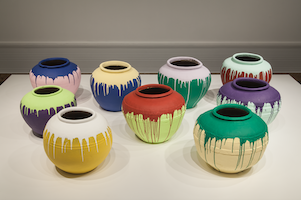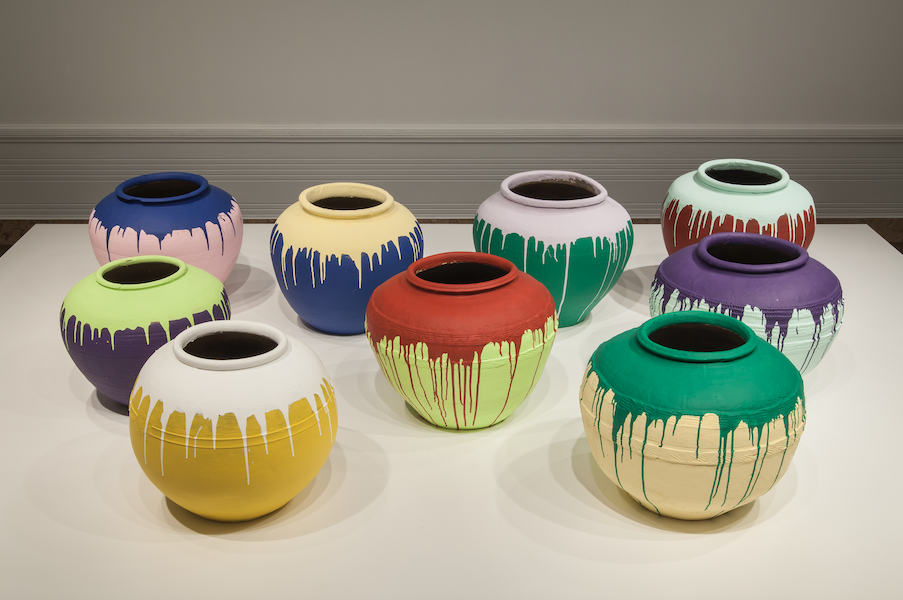
SEATTLE – Through June 30, 2023, the Seattle Asian Art Museum presents Beyond the Mountain: Contemporary Chinese Artists on the Classical Forms, its second special exhibition since the 2020 debut of the reimagined and reinstalled museum. Beyond the Mountain features work by six contemporary Chinese artists that takes as inspiration the classical mediums and subjects of Chinese art — ink on paper, archaeological artifacts, and landscape painting — to tackle urgent and complex present-day issues. Creating in a range of media, including video, multimedia installation, painting and photography, these artists address ideas including globalization, migration and the impact of human life on the natural world.
Beyond the Mountain is curated by Foong Ping, Foster Foundation curator of Chinese art. The artists on view are Chen Shaoxiong, Ai Weiwei, Zhang Huan, Yang Yongliang, Lam Tung Pang and Tai Xiangzhou; Yang Yongliang and Lam Tung Pang are new to Seattle audiences. Each of the five artists’ work engages with traditions from the Chinese cultural imagination to explore concerns relevant around the world, such as street protests, rapid urbanization and pandemic lockdowns. On view for a year, it will include a six-month rotation for light-sensitive works.
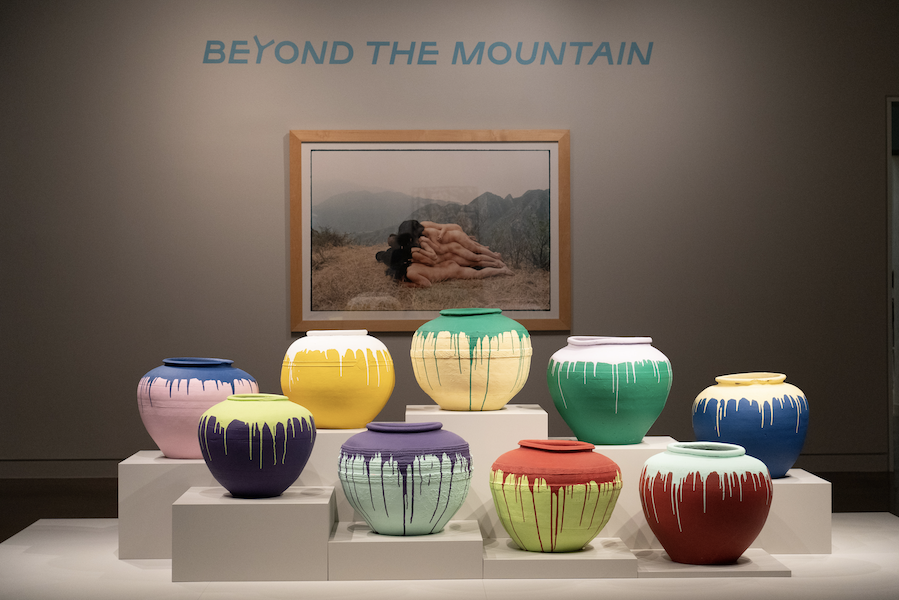
“Beyond the Mountain is a feast for the senses, with video, sound, images and kinetic installation creating a dynamic experience,” said Foong. “I hope visitors discover the eloquent voices of these artists — as I did when putting this exhibition together — in reflecting on many of the urgent questions we’re all facing together.”
Foong developed the exhibition partly in collaboration with students at the University of Washington during her 2020 spring seminar, Exhibiting Chinese Art, held on Zoom due to the pandemic. Wanting to make the online class fun and engaging, Foong divided the students into teams, assigning each team three seemingly unrelated artworks as guides for developing cohesive and imaginative curatorial frameworks. “Beyond the Mountain wouldn’t be what it is without their insights,” said Foong. “I wanted to challenge my students and they really impressed me. While the exhibition had been in the works for a very long time, I was excited to include a few of their ideas into the show.”
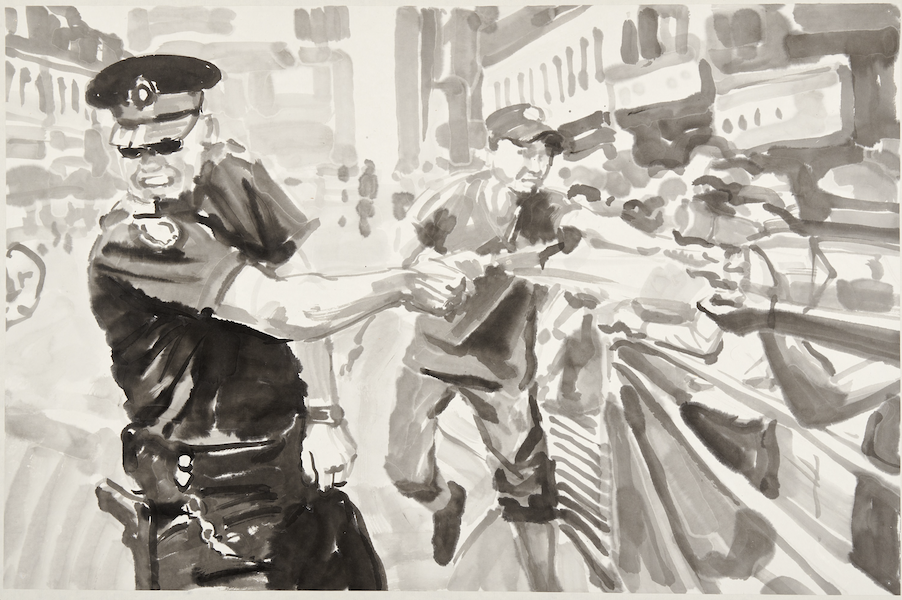
ink/protest
Ink and brush are key to the classical Chinese art forms of calligraphy and painting. Ink Media #4 (2011–2013) by Chen Shaoxiong (Chinese, 1962–2016) observes the deeply connected global language of today’s street protests by reconceptualizing the raw emotions of images captured from internet media as 10 ink paintings (five in each rotation). An accompanying video montage animates the power of collective action; its soundtrack features Jasiri X’s Occupy (We the 99) and a Taiwanese version of Do You Hear the People Sing from the 1980 musical Les Miserables, today a protest anthem sung in many languages.
artifact/culture
The provocation in Ai Weiwei’s 2010 work Colored Vases lies in the brightly colored, dripping industrial paint that he gleefully applies to clay pots of unknown origin; are they in fact from China’s Han dynasty? Defacing artifacts that are usually venerated as part of the Chinese nation’s history and culture, Ai (Chinese, b. 1957-) questions those very values.
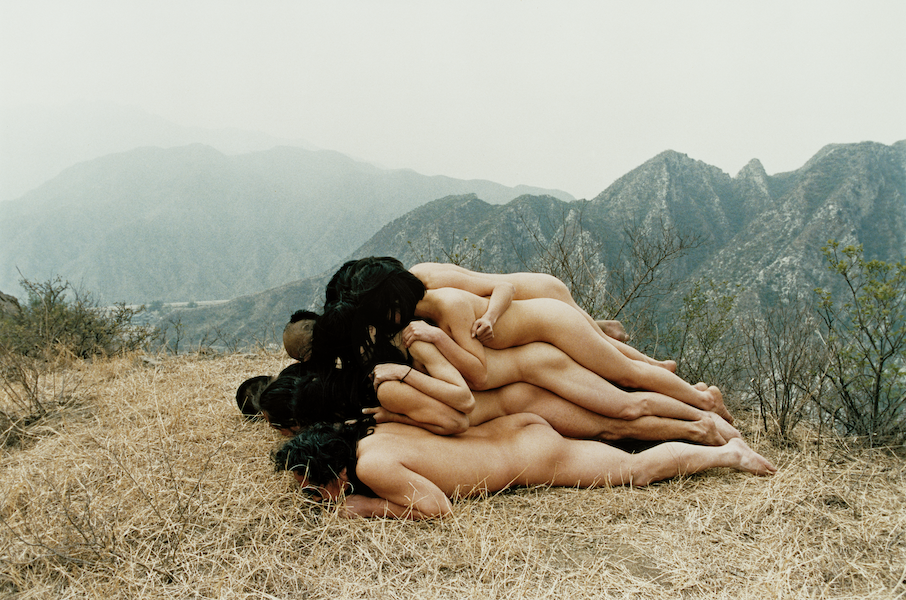
proverb/nature
In the 1995 photograph To Add One Meter to an Anonymous Mountain, the naked bodies of Zhang Huan (Chinese, b. 1965-) and his artist friends are stacked on the top of Mount Miaofengshan, becoming momentarily taller than the peak. By performing an old Chinese saying, “Beyond the mountain, there are higher mountains yet,” they expose the human hubris of challenging the natural world.
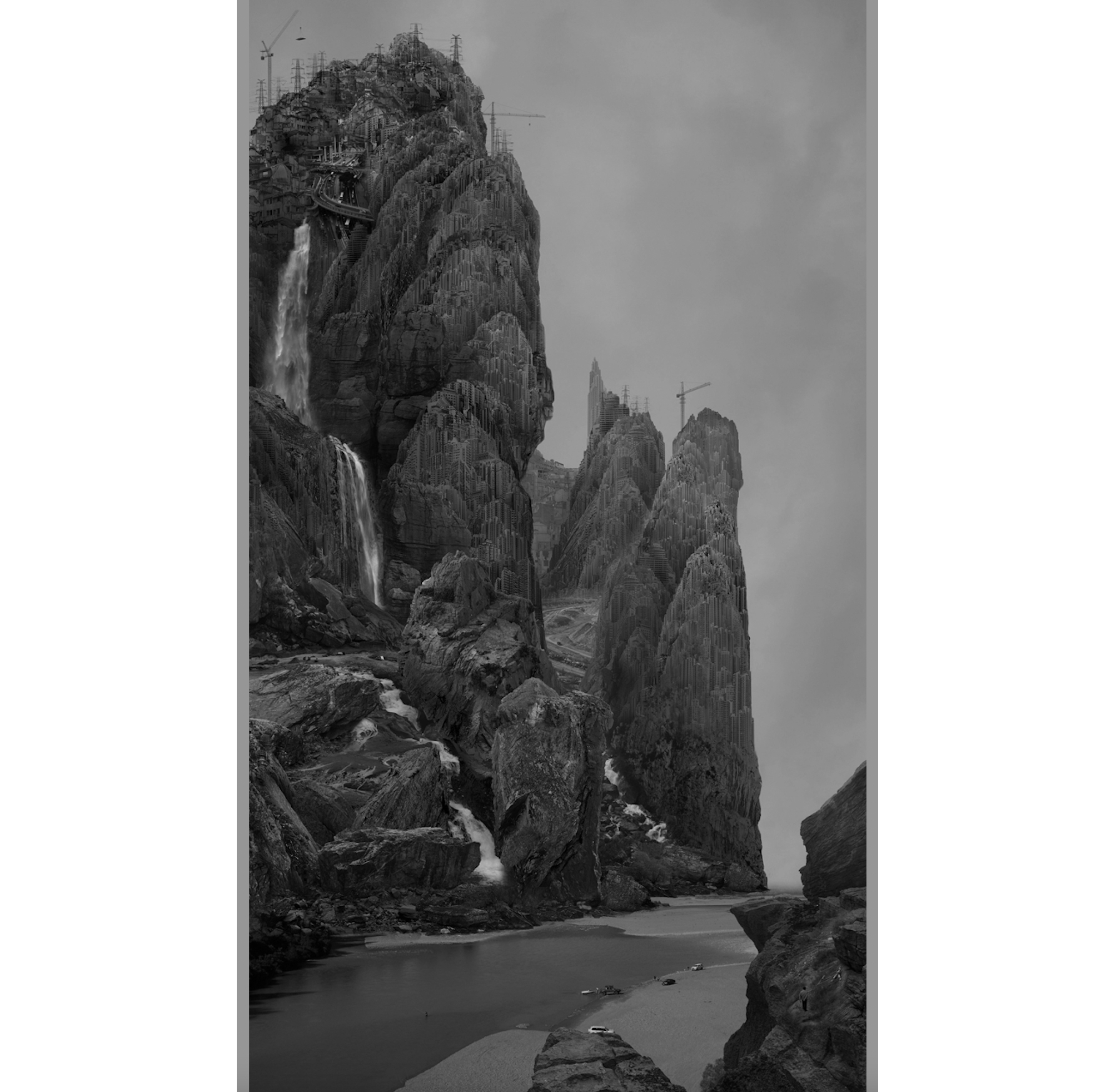
landscape/cityscape
Yang Yongliang (Chinese, b. 1980-) fools our eyes to comment on the human and environmental costs of uncontrolled urbanization. The Departure (2019; 8:30 minutes) and The Return (2019; 6:30 minutes) are projected onto screens more than 10 feet tall, making monumental the classical form of ink paintings. As you watch, you see what looks like intricate ink paintings are in fact eerie digital and analog landscapes, stitched together from thousands of photographs and videos of Asia’s megacities.
landscape/escape
The Great Escape (2020) is a kinetic installation conceived during lockdown at the pandemic’s onset by Lam Tung Pang (Hong Kong, b. 1978-). A six-sided lantern painted with landscape imagery and video projections surrounds a scale-model home that evokes a mountain retreat. Visitors can circulate around the installation and peek inside at its inner workings. With this work, the artist meditates on notions of escape and escapism — from Chinese traditions of retreat into transcendent nature to the theatrical escapes of magician Harry Houdini.
Visit the website of the Seattle Asian Art Museum and see its dedicated page for its special exhibition Beyond the Mountain: Contemporary Chinese Artists on the Classical Forms.


